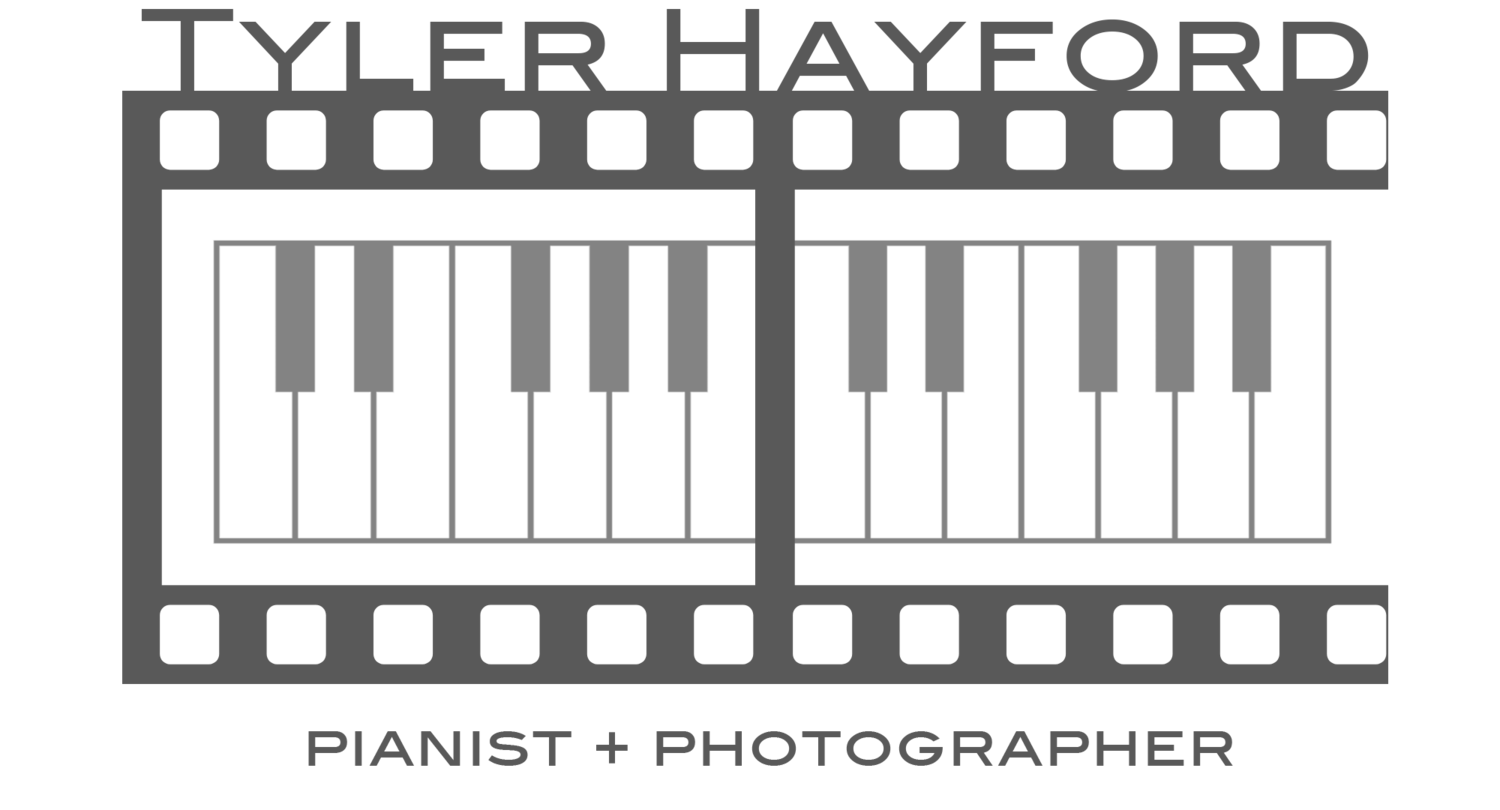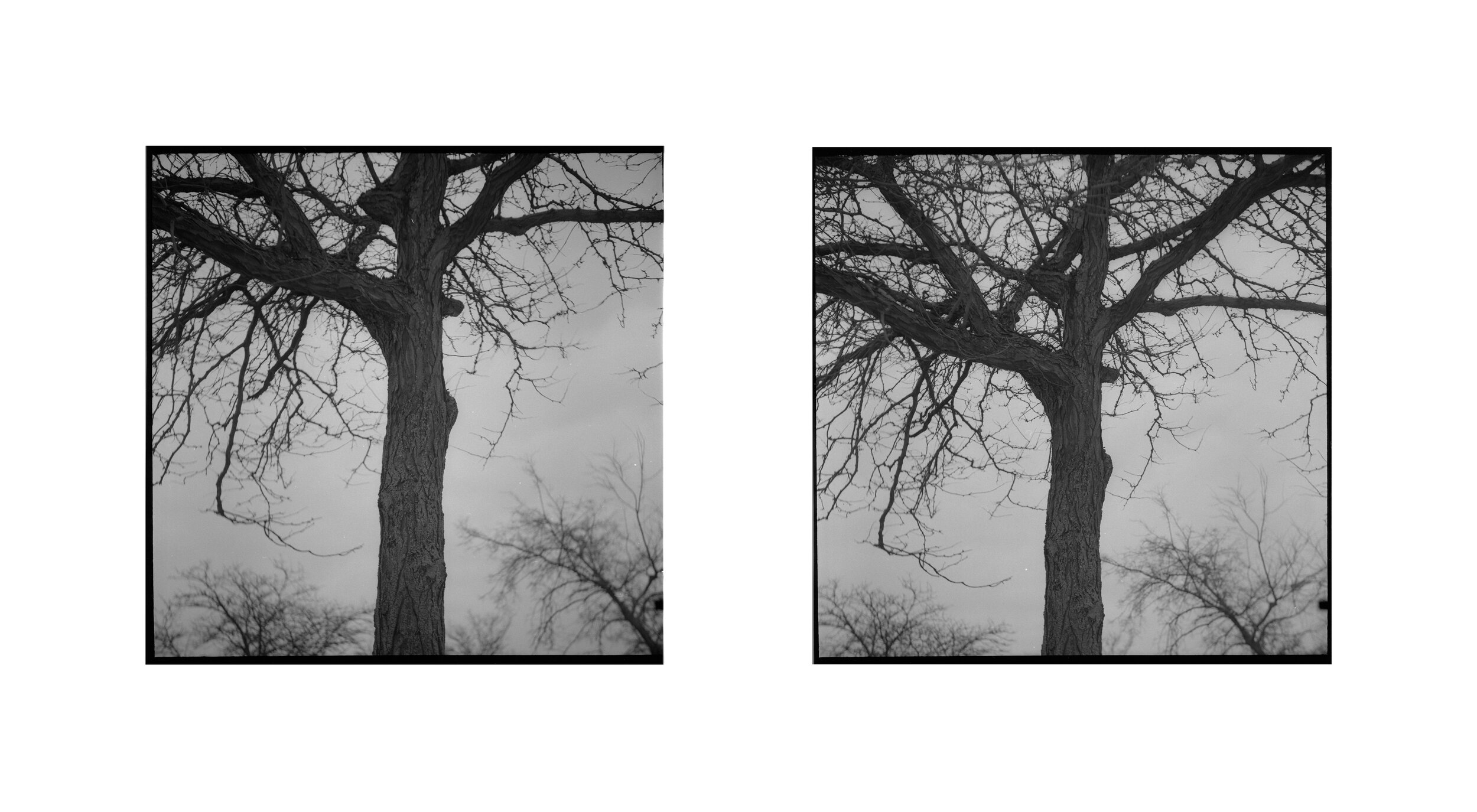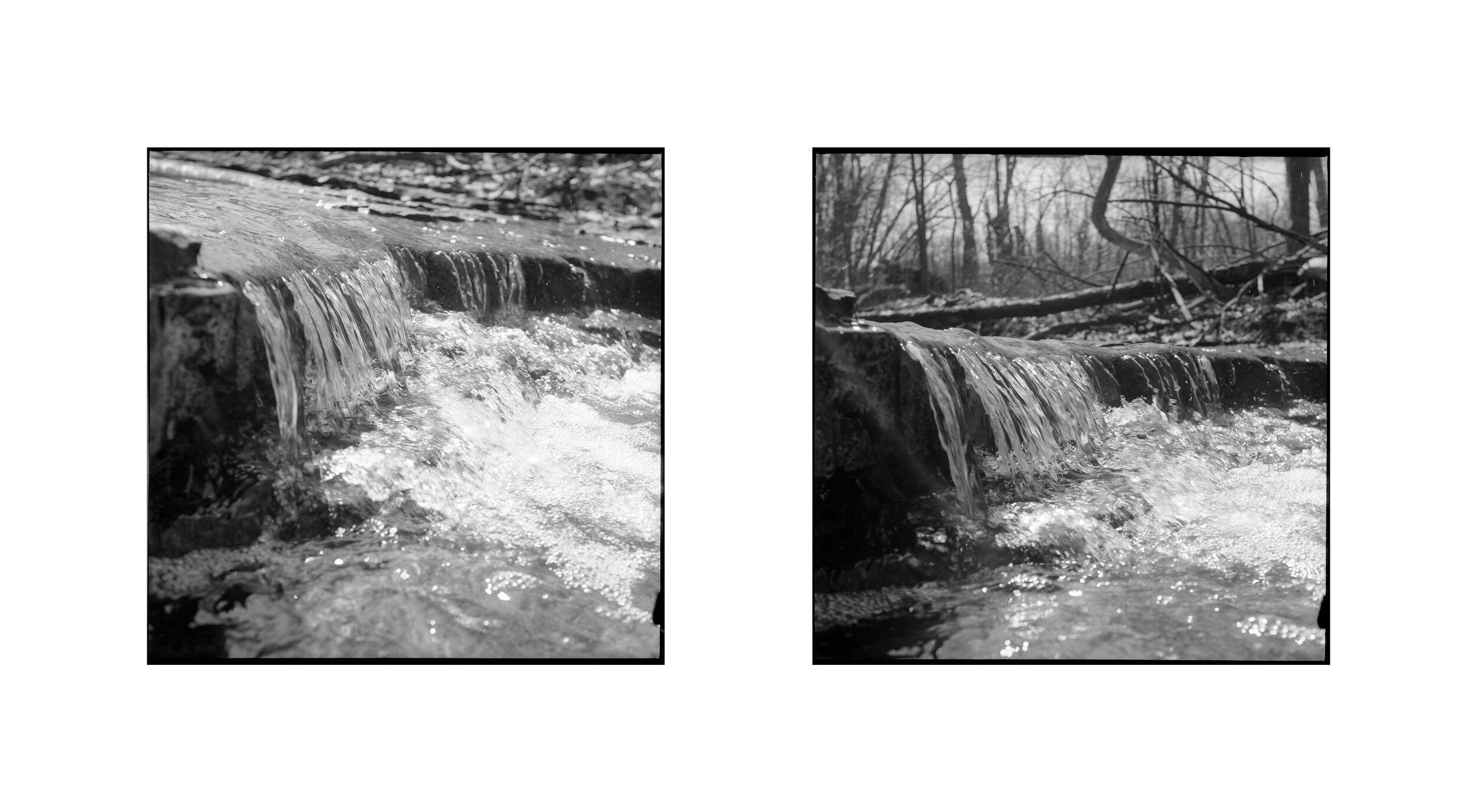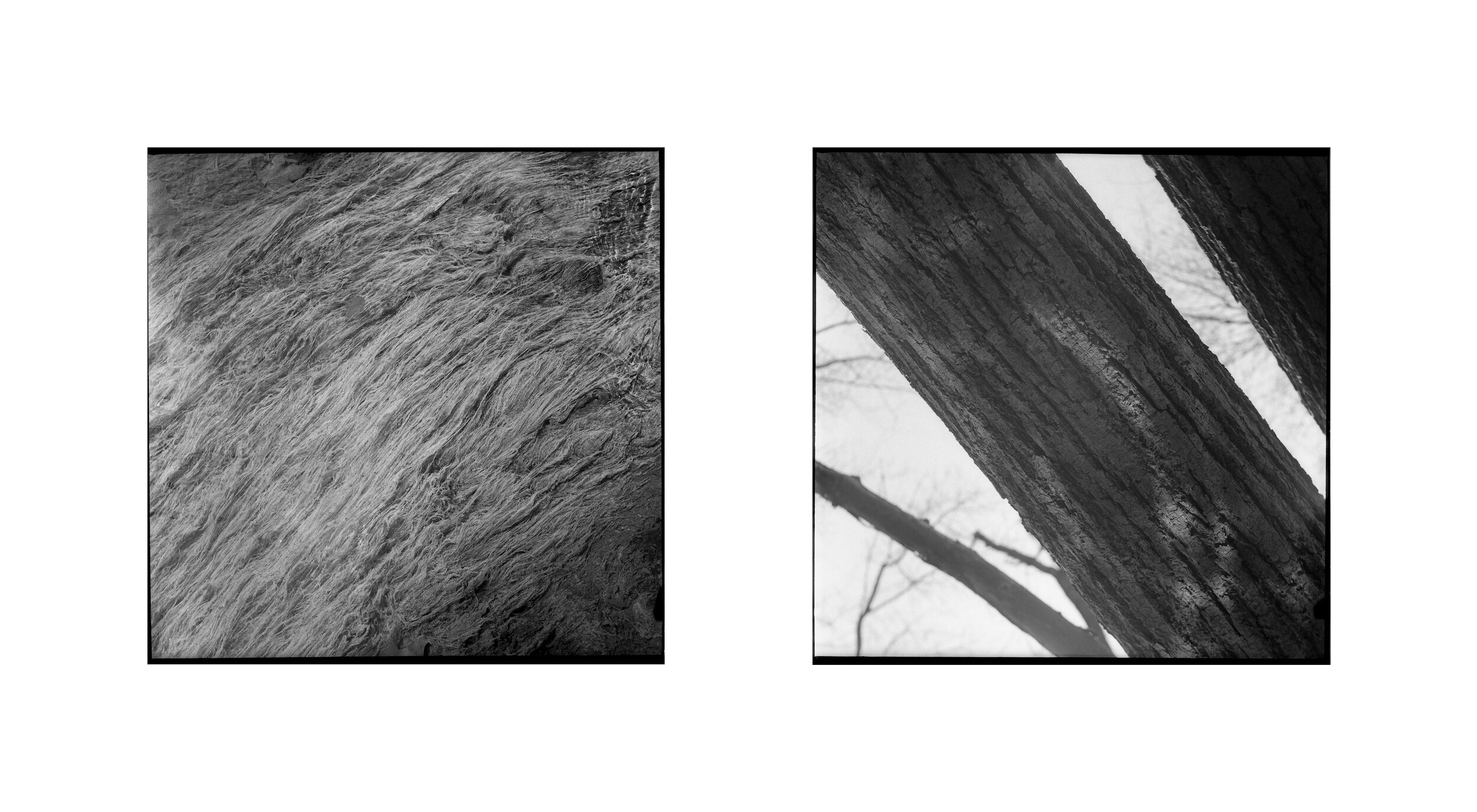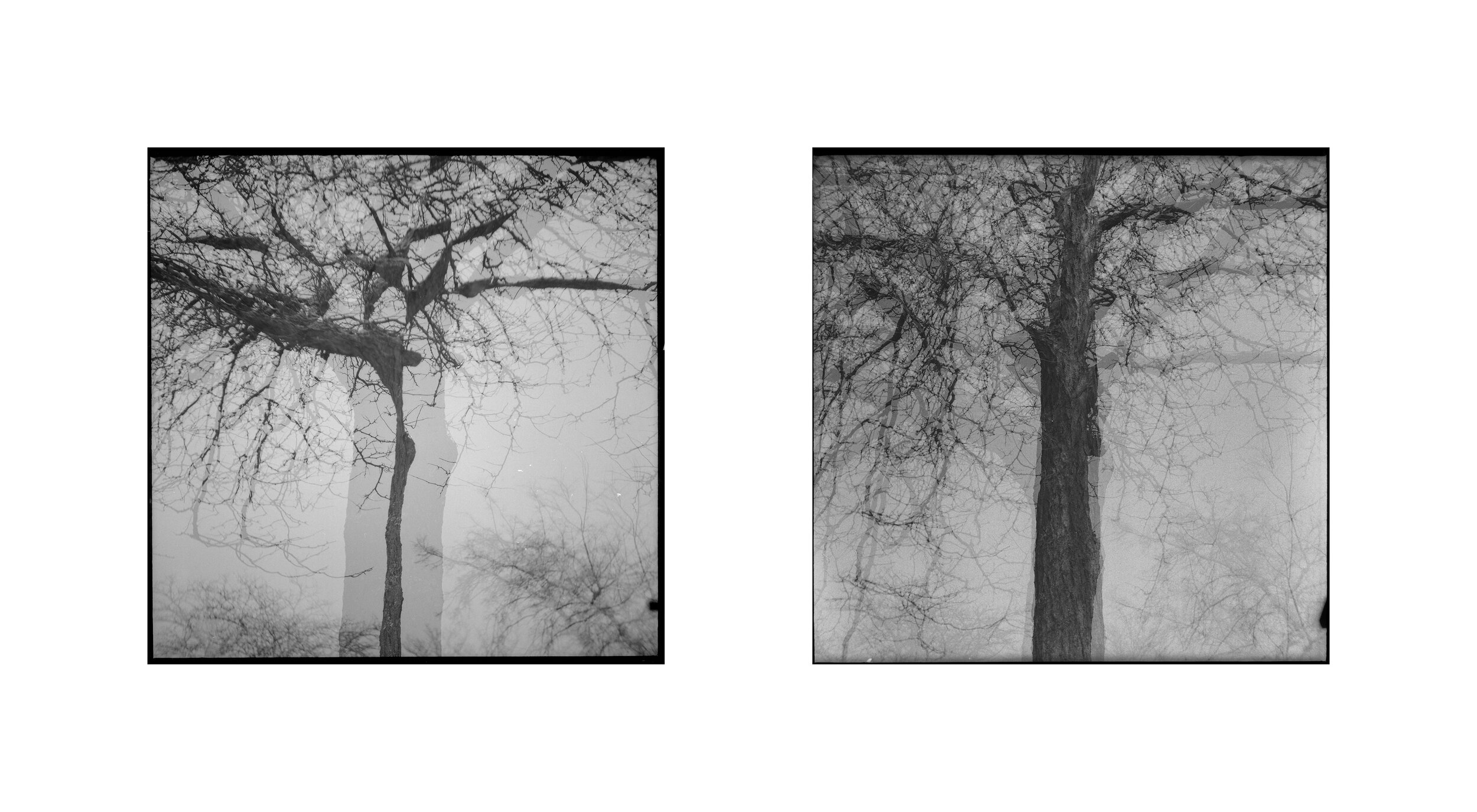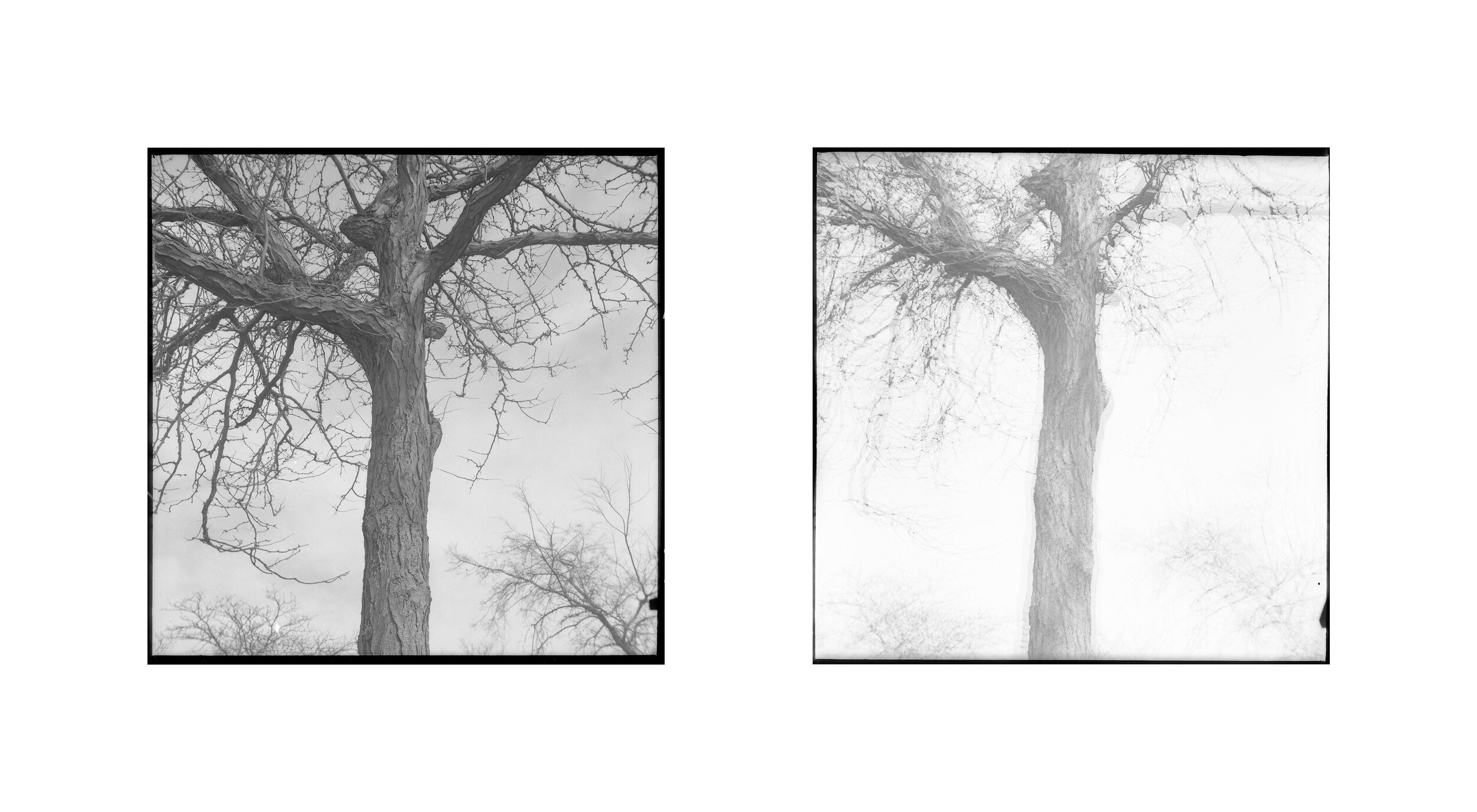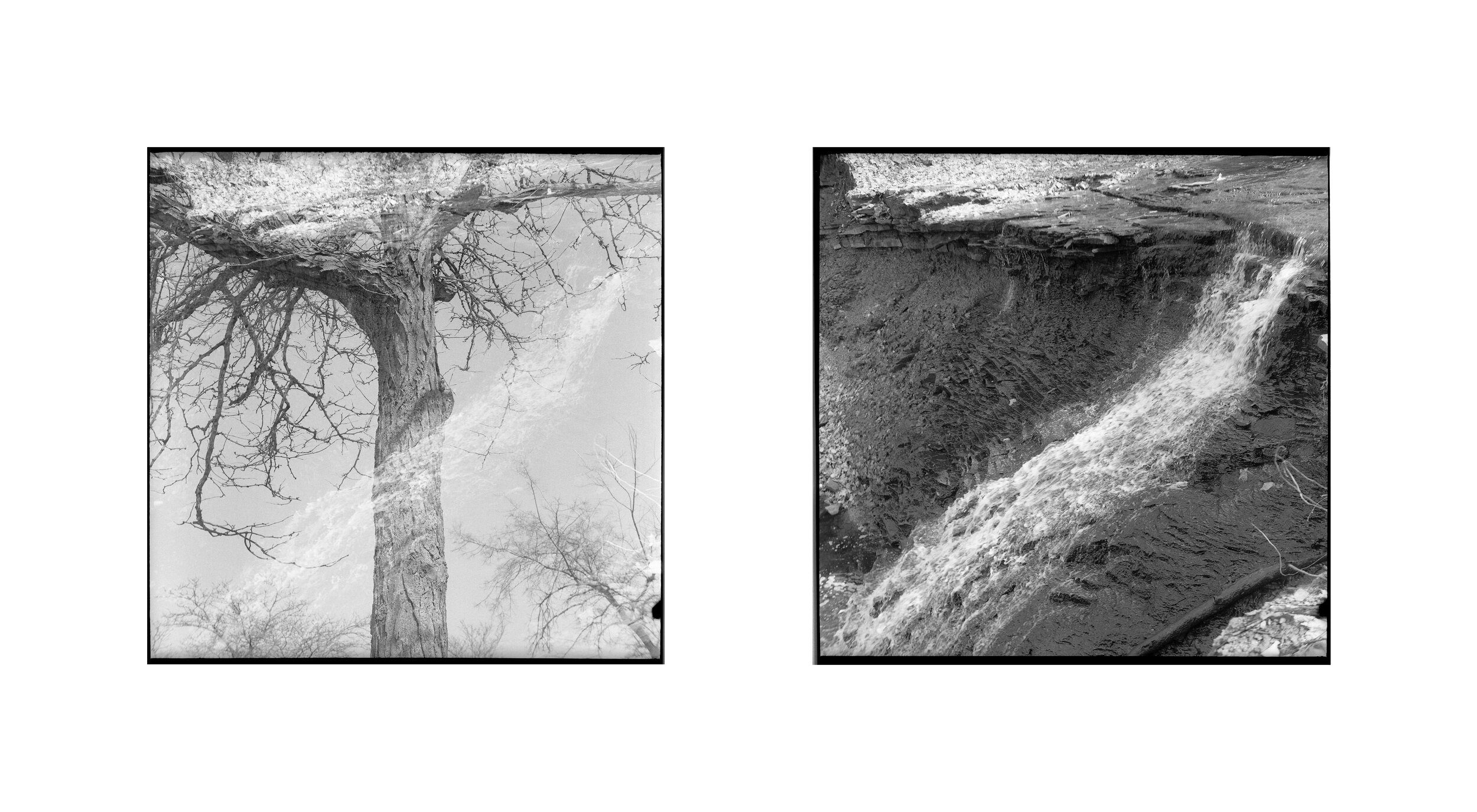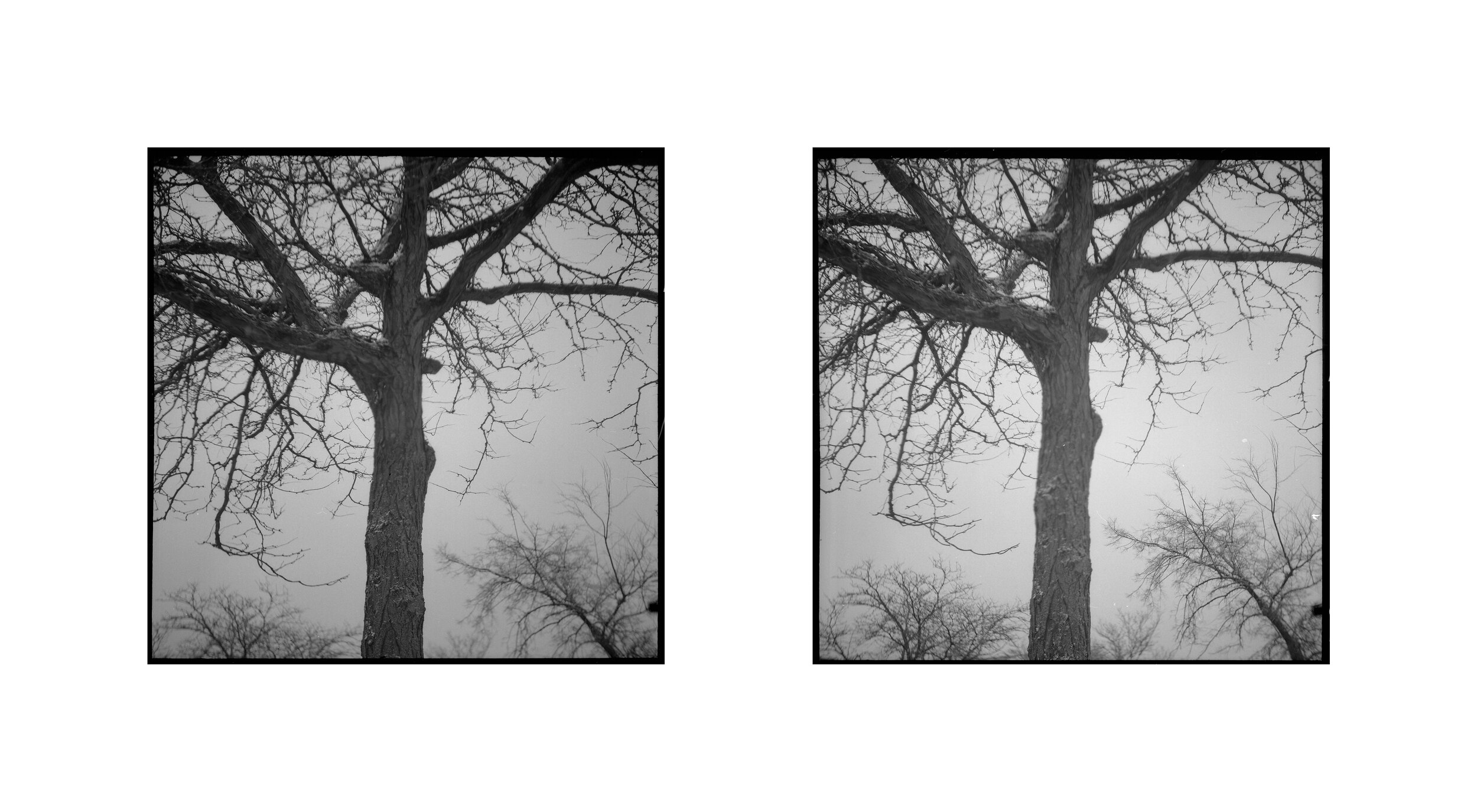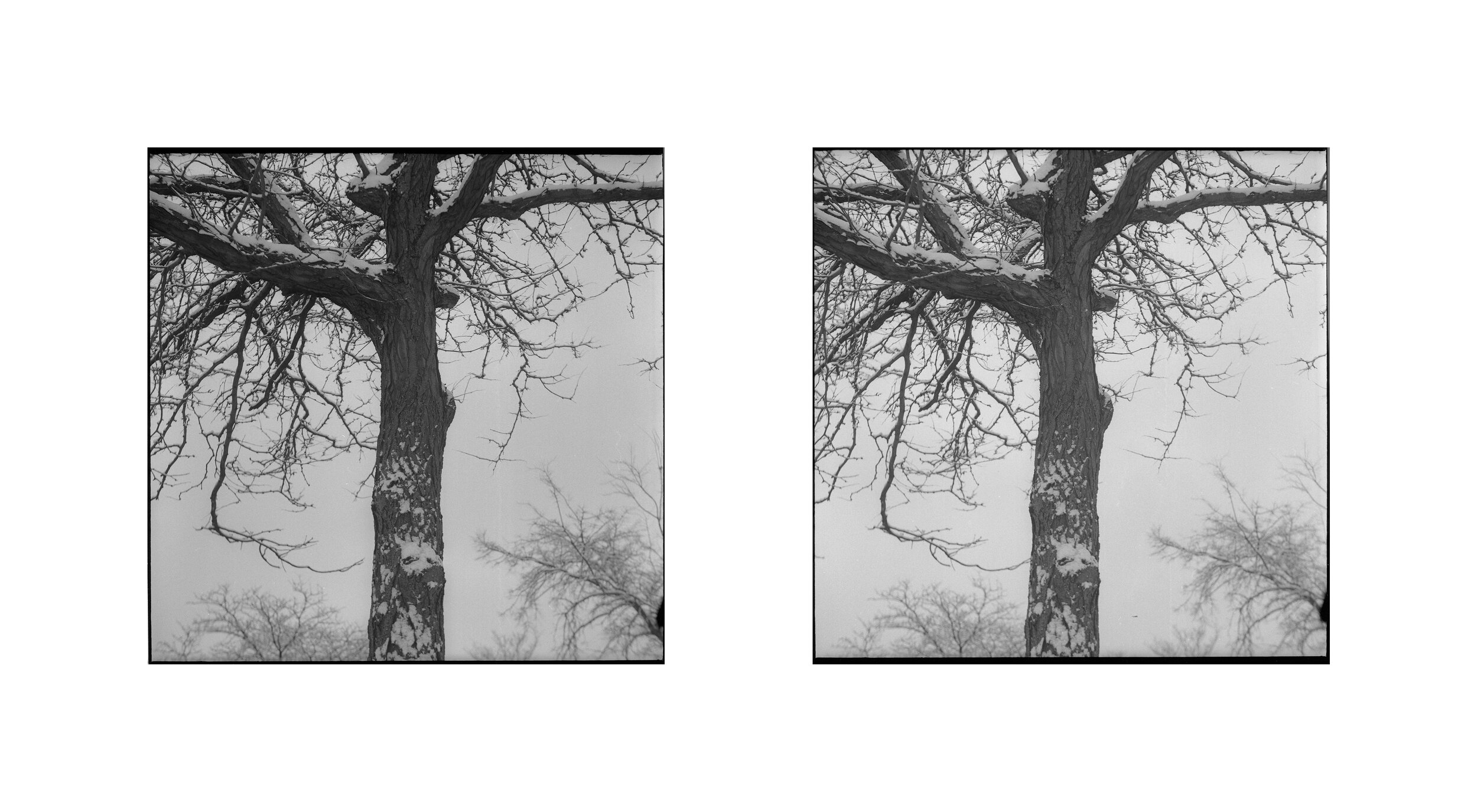Documentation of “Vine and Branch”
A photographic/audio installation
The eastman school of music, Rochester, n.y.
May 5, 2019 11am-12pm
Background
This project represented the culmination of my studies and experiences while pursuing the Bachelor of Music in Musical Arts degree, which I embarked on with the desire to explore sensory and conceptual relationships between photographic and musical languages. It was the product of an attempt to induce a form of synesthesia for participants by dissecting a piece of music into a three-dimensional and non-linear soundscape. The images presented were created in interpretation of specific motivic concepts and patterns within the first of Carl Vine's Five Bagatelles for piano, and were conceived of as I was preparing the piece for my Bachelor of Music in Piano Performance degree recital. I hoped to forge an inseparable connection between the two parts of my degree at the moment of completion. While I began with the intent to offer a complete representation of the piece, I was able to work with only 16 carefully chosen measures due to limited resources. In the future, with other projects I would try to recreate entire pieces in a non-linear representation on a much larger scale. Further, I would also pursue the combination of my music and photography into a more singular and original work by producing the photographs with an original musical concept in mind, but using improvisation in performance or recording to treat the resulting image as a “graphic score” of indeterminate music. I would also include darkroom techniques to create visual representations with greater intention while preserving visual indeterminacy with the analog method.
Concepts
The choice to represent these musical motifs and patterns with natural textures was both a conscious and unconscious process. An initial inspiration formed from strong visualizations that I perceived in the music; these associative visualizations became more specific as I put more thought into developing a hybrid visual-aural language. Though the chronology was purposefully obsfucated in original presentation with images identified only by sound (no measure numbers displayed), I hoped that a narrative would emerge in which natural cells and molecules, much like musical cells, undergo changes through process, repurpose, and rebirth... but the original material never truly ceasing to exist. With this concept in mind, the images were captured over the course of the transition from winter to spring.
METHODS
Accompanying each of the images was a corresponding audio clip recorded in the same space where the installation was to take place. Together with the expertise of Eastman Audio Research Studio (EARS) senior assistant Brett Copeland, these audio clips were engineered to form an indeterminate, non-linear soundscape which takes place over the course of an hour. This was manifested into a physical landscape by constructing platforms for the photographic prints with corresponding speakers embedded within each, and arranging them into a circle that could be left and entered at any location and at any time. This audio system was controlled by a program which operated under the following conditions:
Each audio clip is assigned to the proper speaker
Audio clips are chosen at random for the duration of an hour
The time at which the next clip begins is randomized
No more than two clips may play simultaneously (to preserve listener comprehension)
Each photograph was made on medium format, black and white negative film. They were presented in diptych type prints in respect to the entire piece of music being composed of two-measure cells. Most, but not all of the musical cells are two copies of the same pattern or motif. This factor and the thematic content of each cell is mindfully represented with the subject choice of each diptych, and in interactions or lack thereof between the two images. As such, the eight pairs of photographs each correlate to a single two-measure unit in the piece, but every image is a unique exposure. This was my first experience working with photographic film. Part of my decision to turn this experience into such a project was that I felt there was important relationship to be explored with indeterminacy and indexicality in music and film photography.
Note: Many of the images were created using an analog technique called double-exposure: without advancing the film to the next unexposed frame, the shutter is opened to expose the film again to chemically superimpose another image at any time, whether it be seconds or weeks later. With black and white negative film, the reaction to light increases the density of the emulsion so the film appears darker, while the darker parts of the scene remain the most translucent in the film, as the film was exposed to less light. Every part of the emulsion that still remains at some degree of translucence will become exposed to more light each time around, and as such will become more dense. Thus, when an image is created from the film by shining light through the film either in a digital scanner or an enlarger, the second image will appear most fully in the darkest parts of the resulting first image (translucent in the film), and will not appear where the first image was nearly white (opaque in the film).
Larger view of images provided below.
